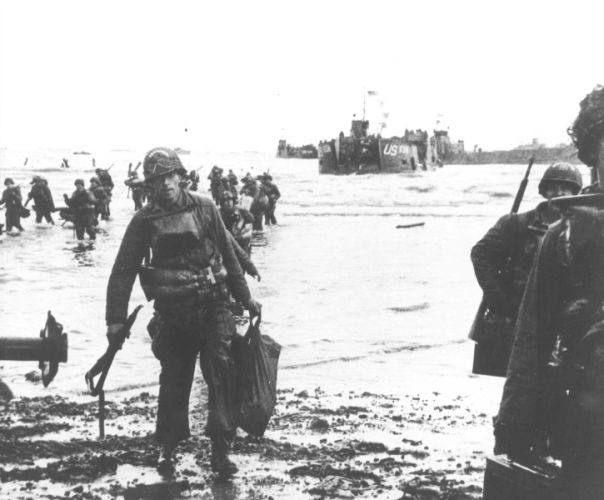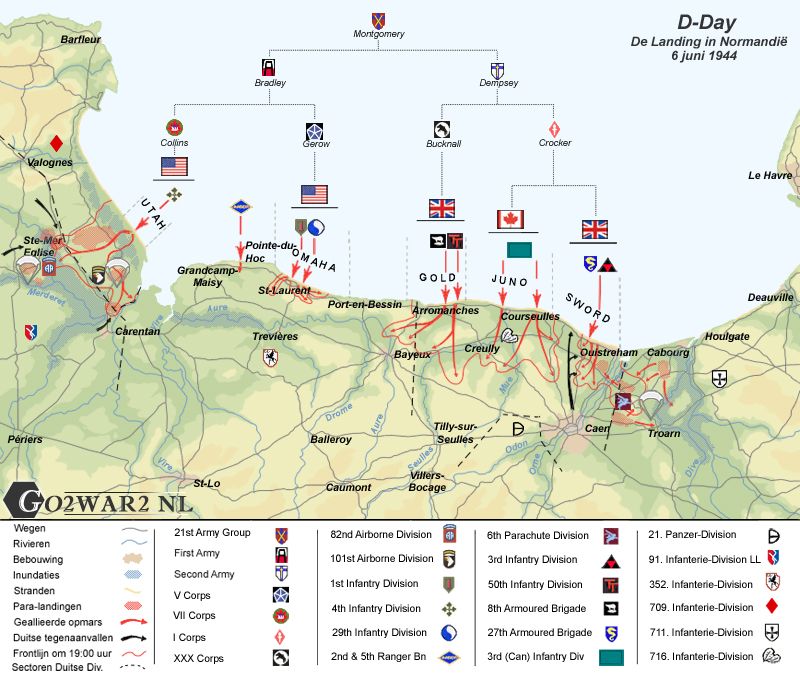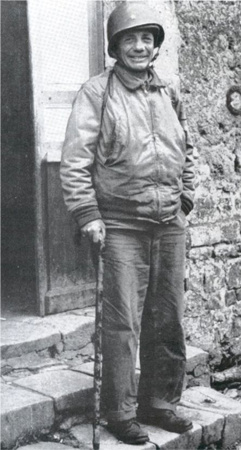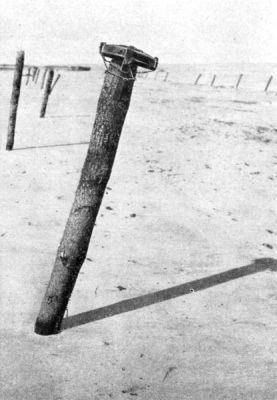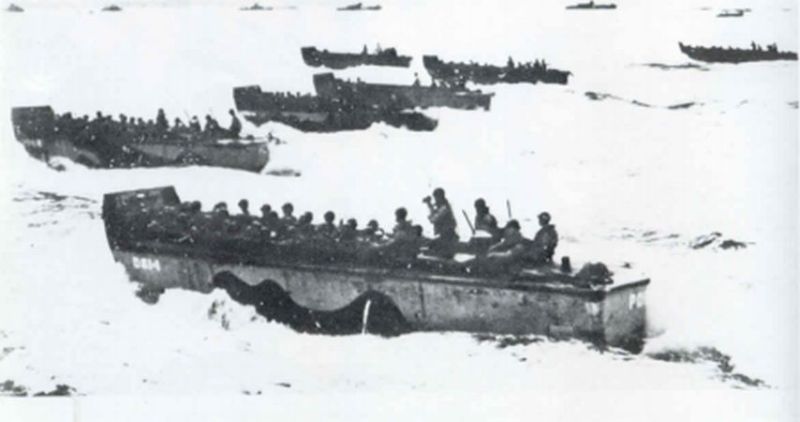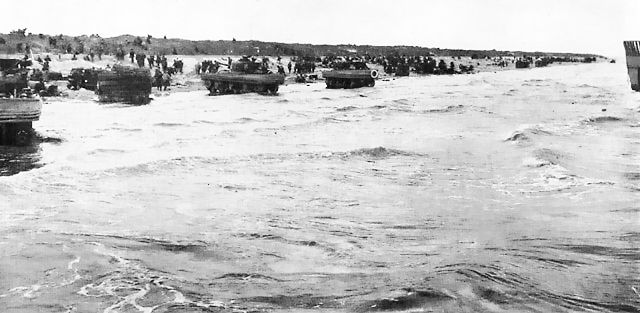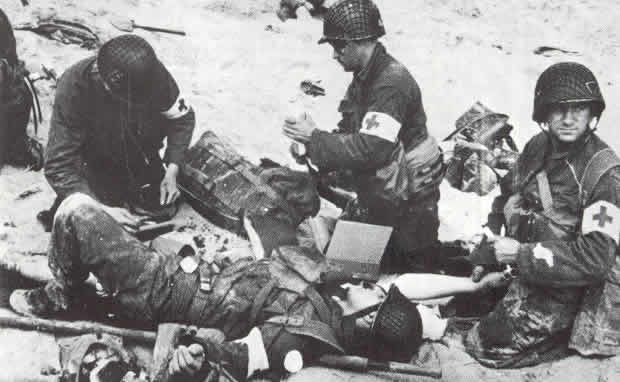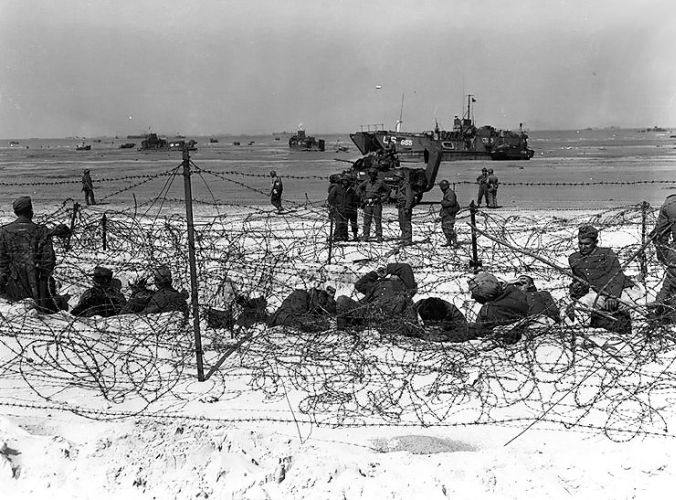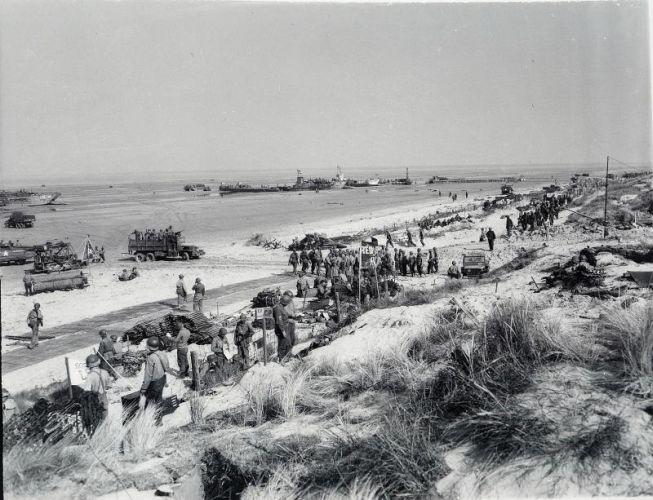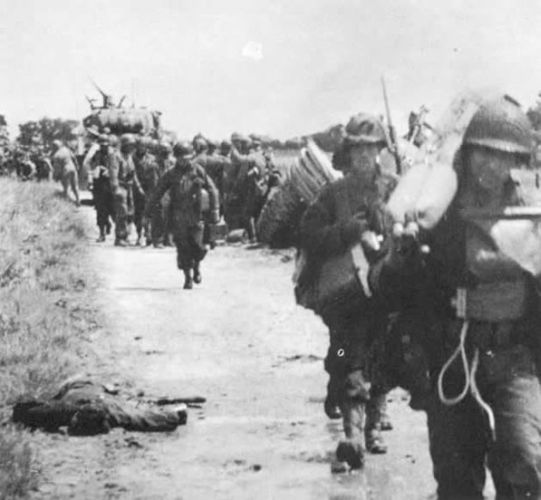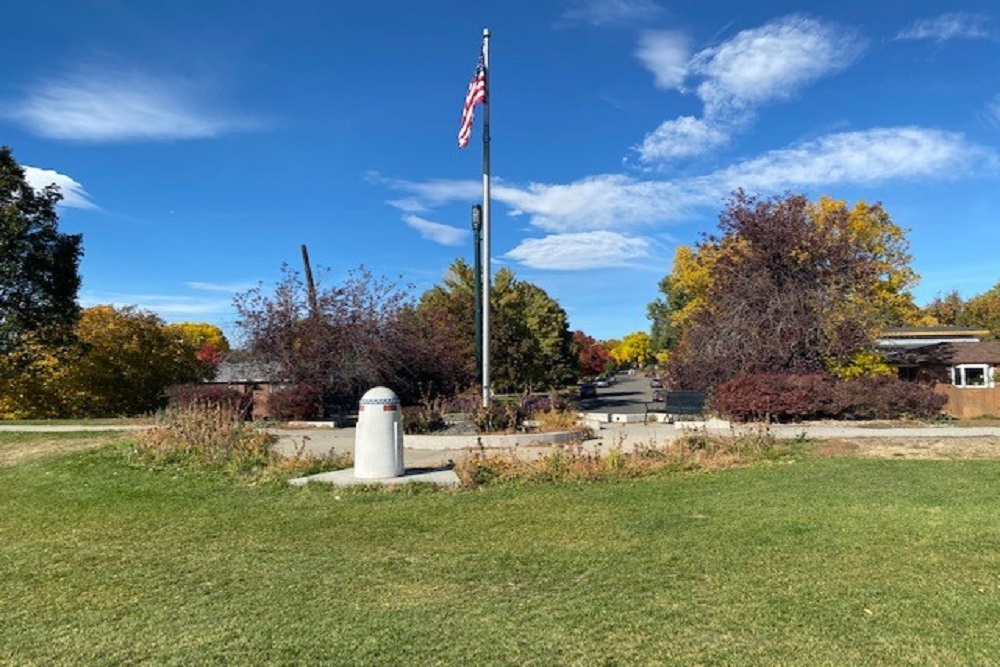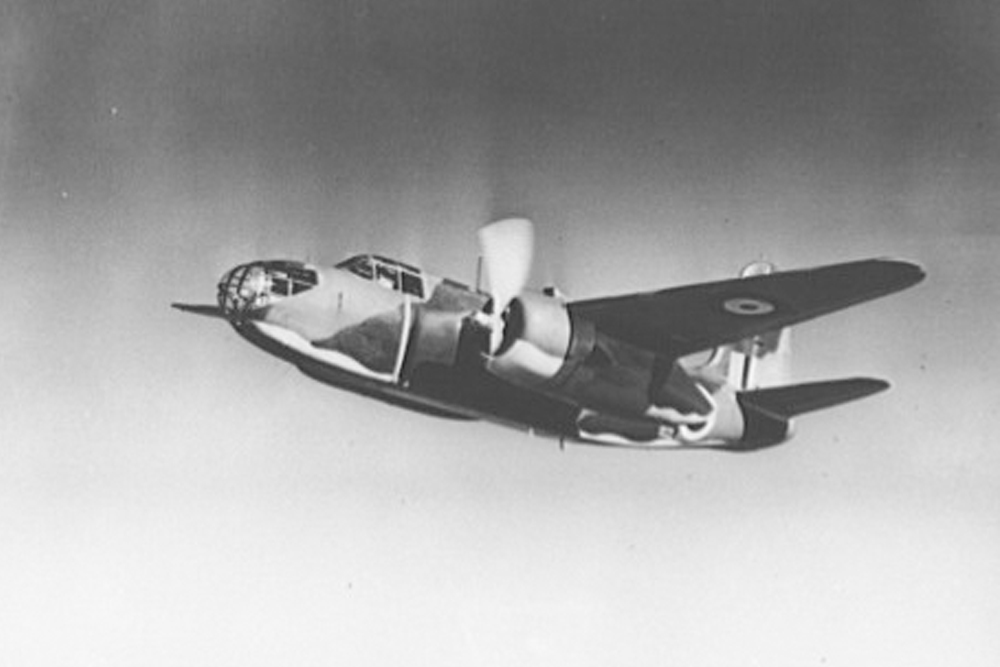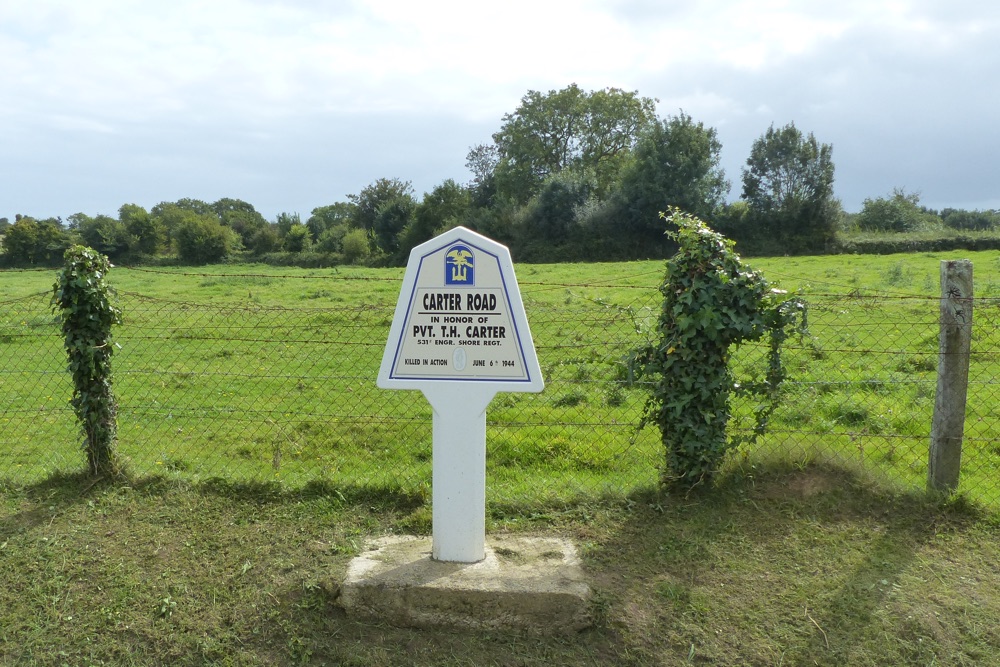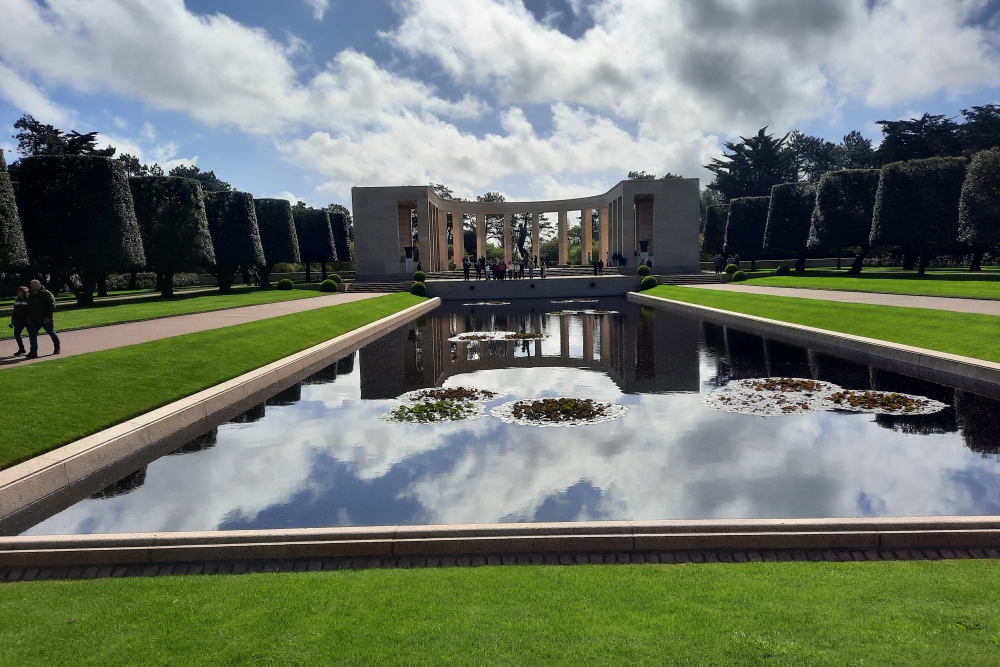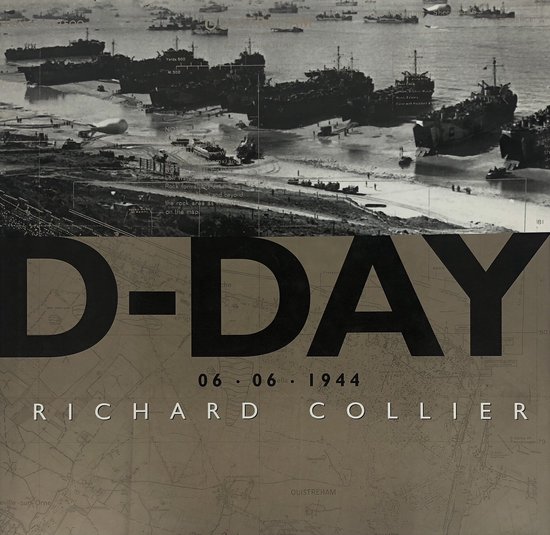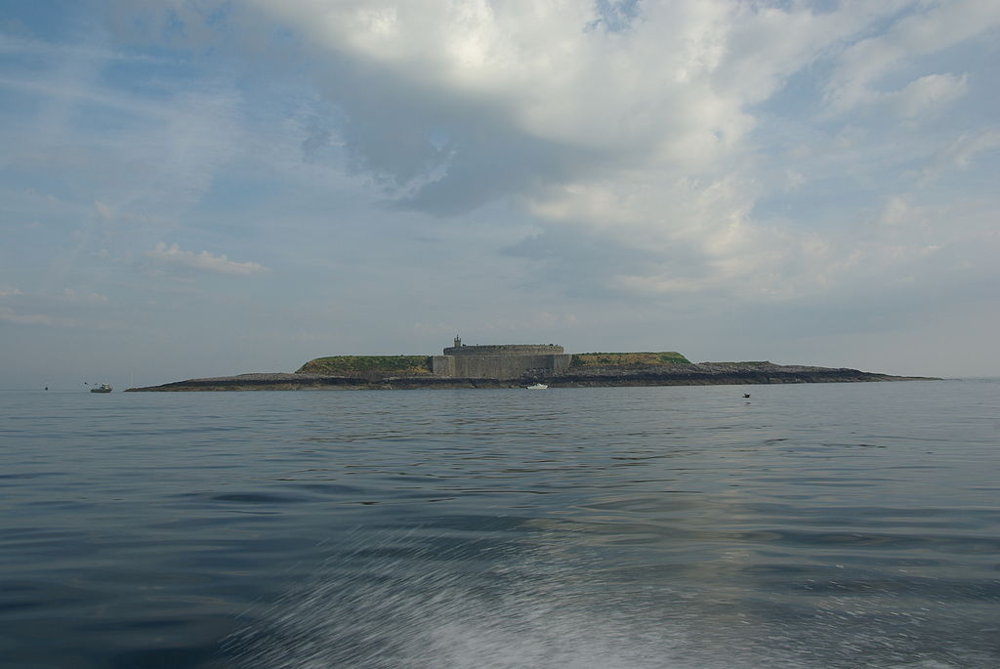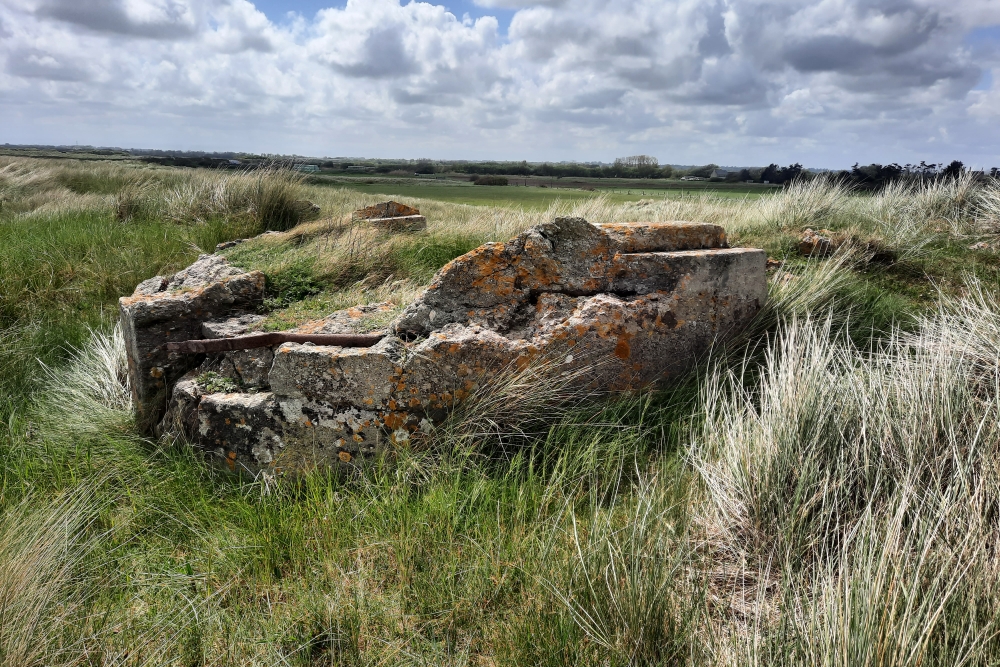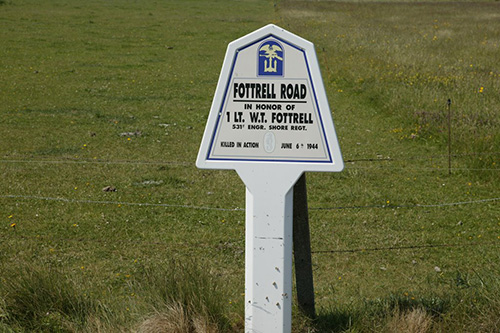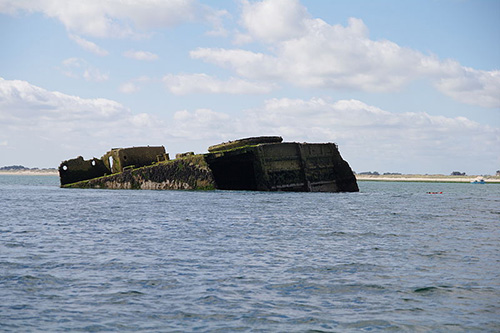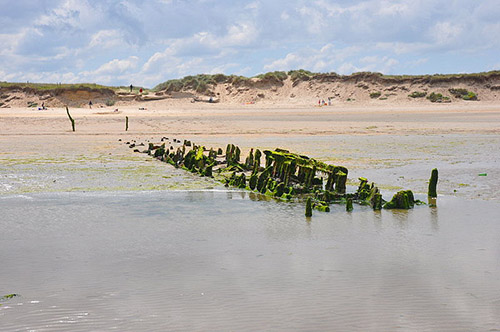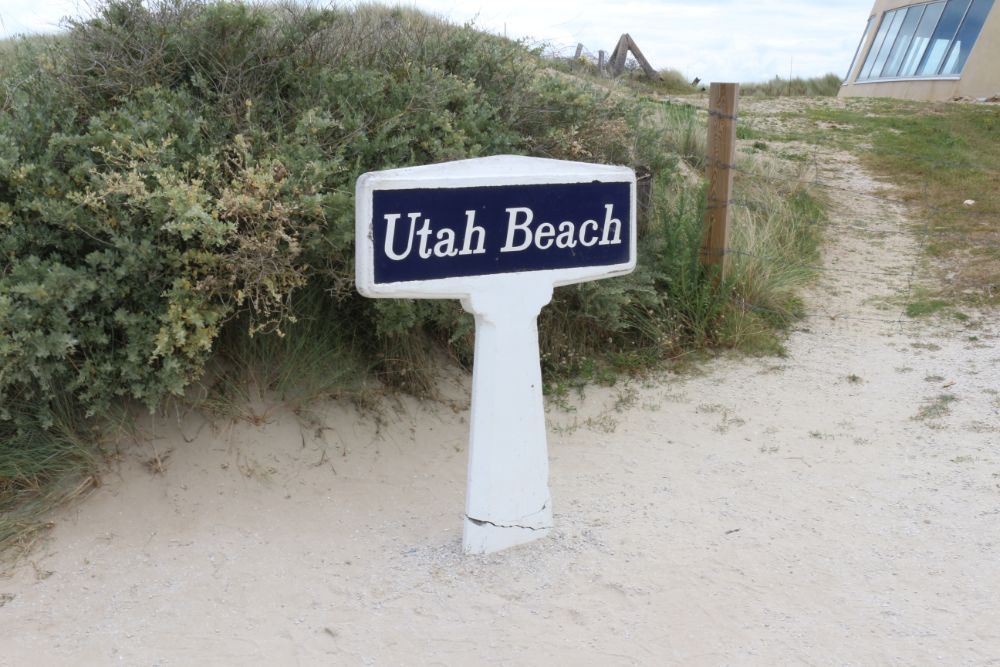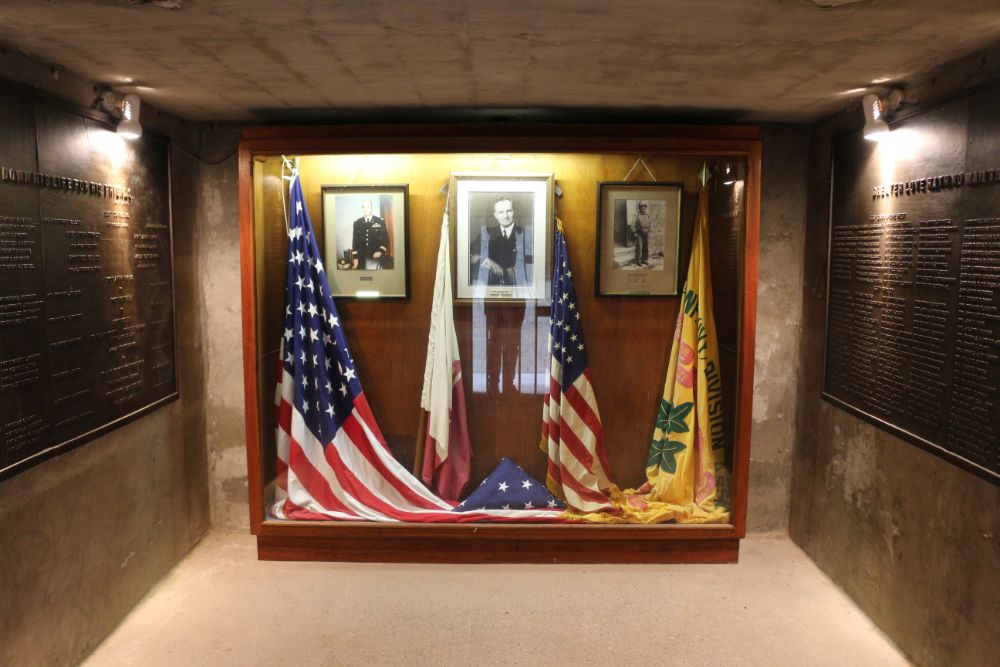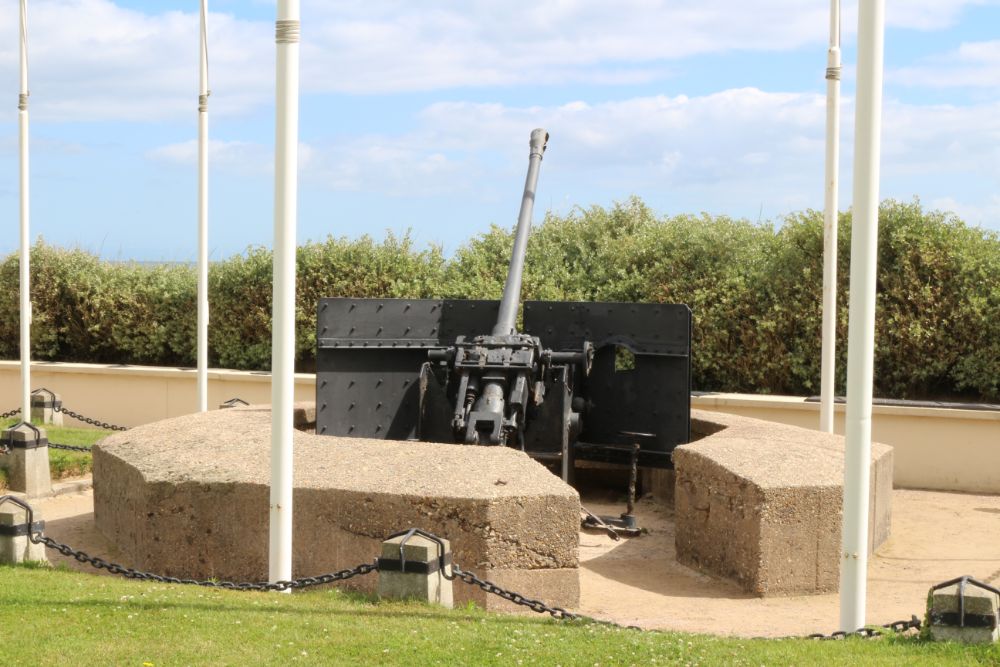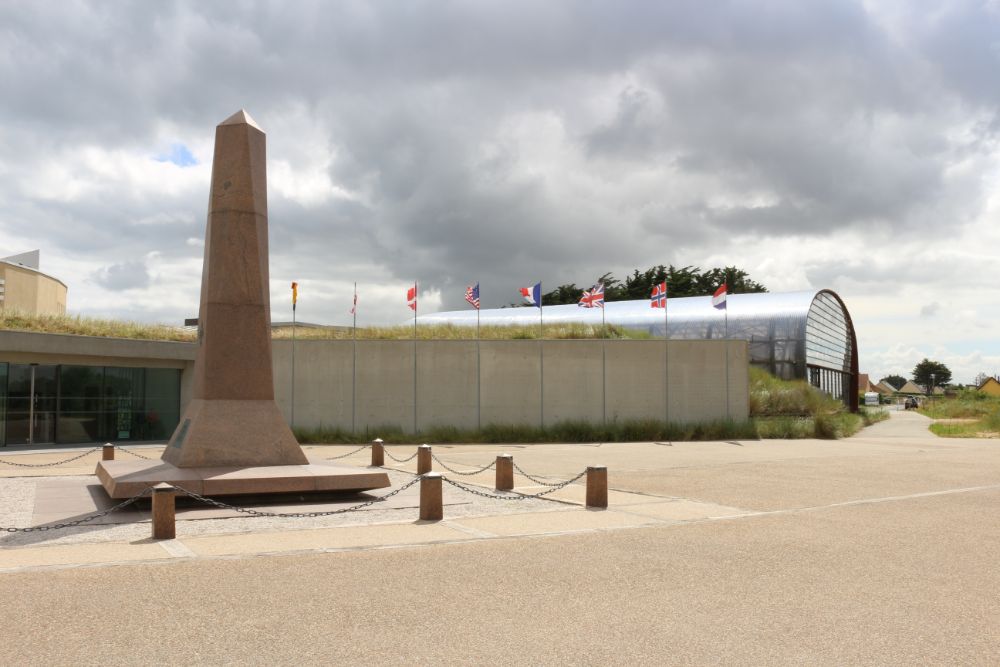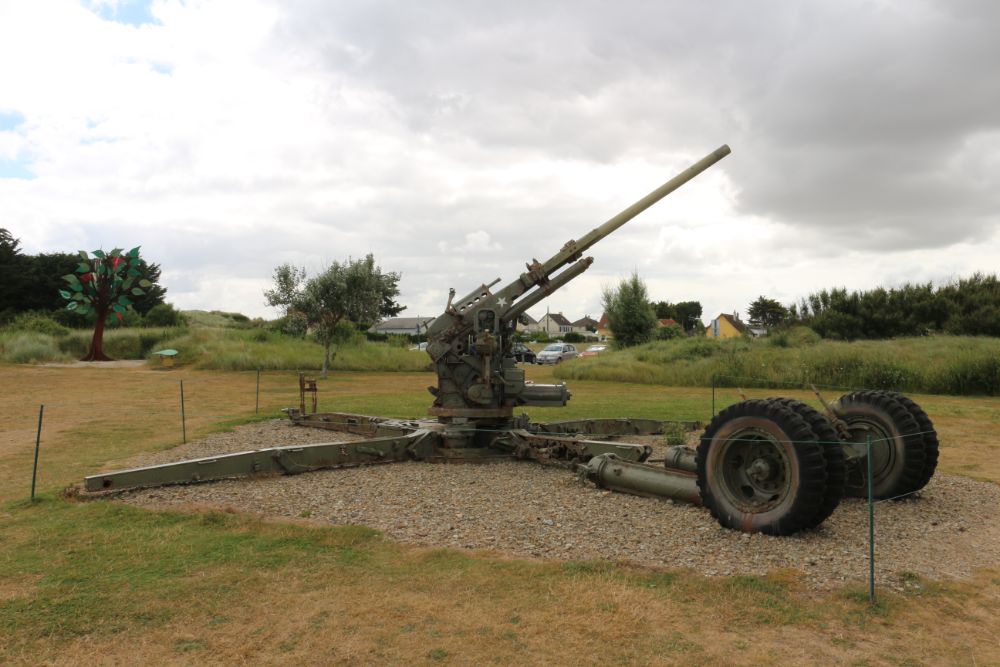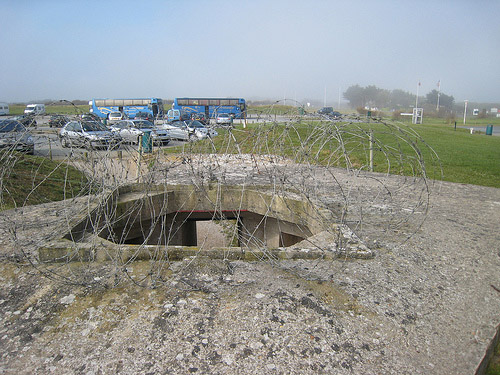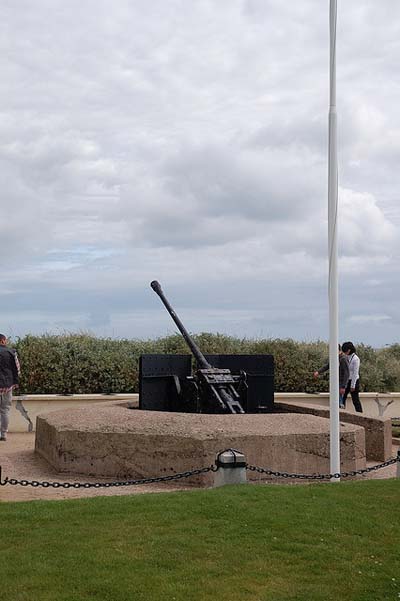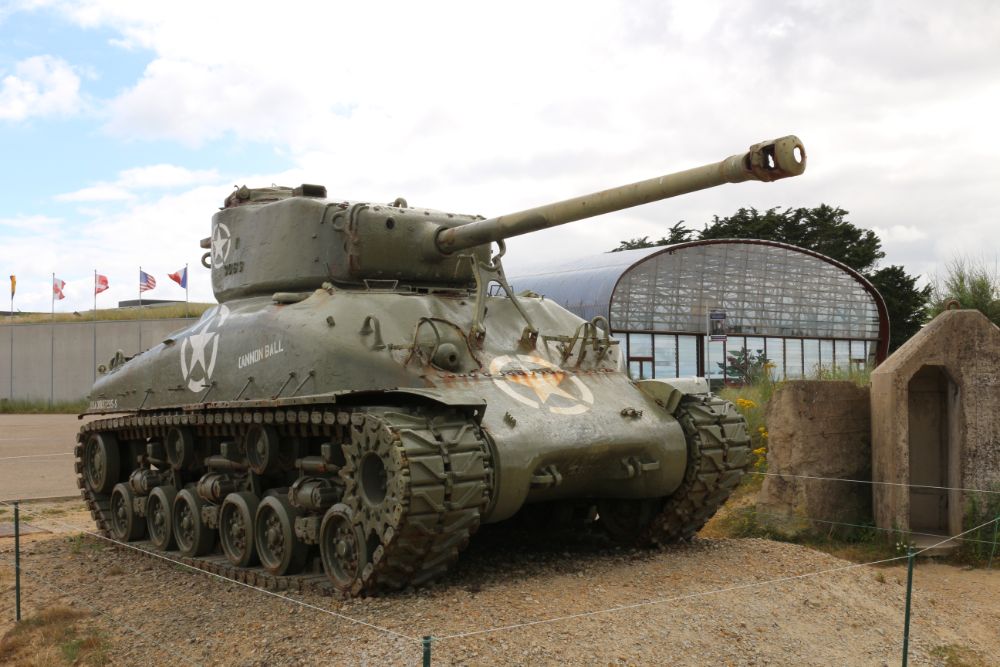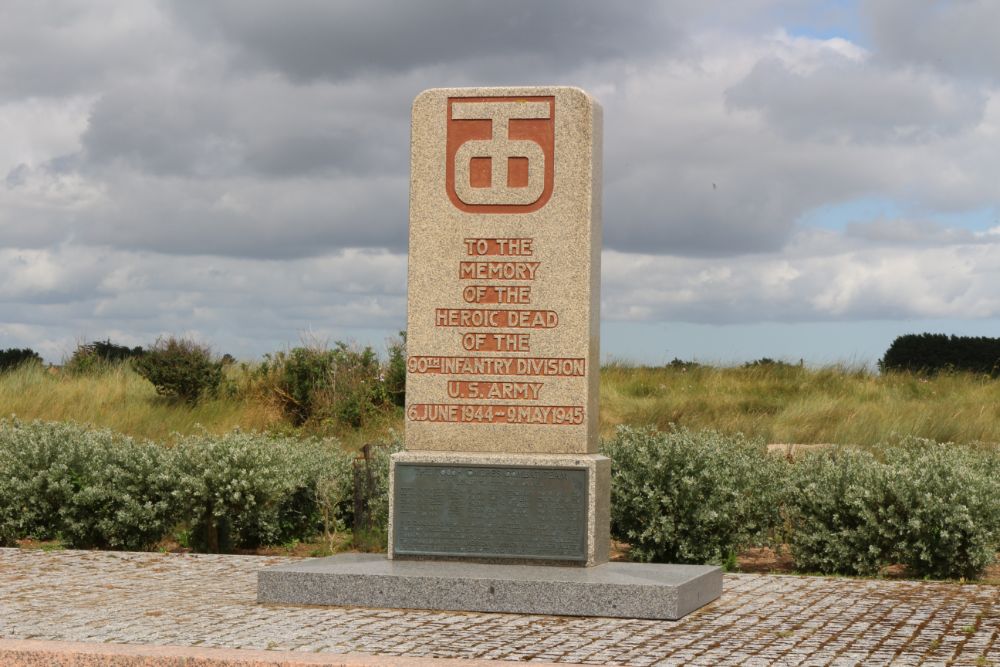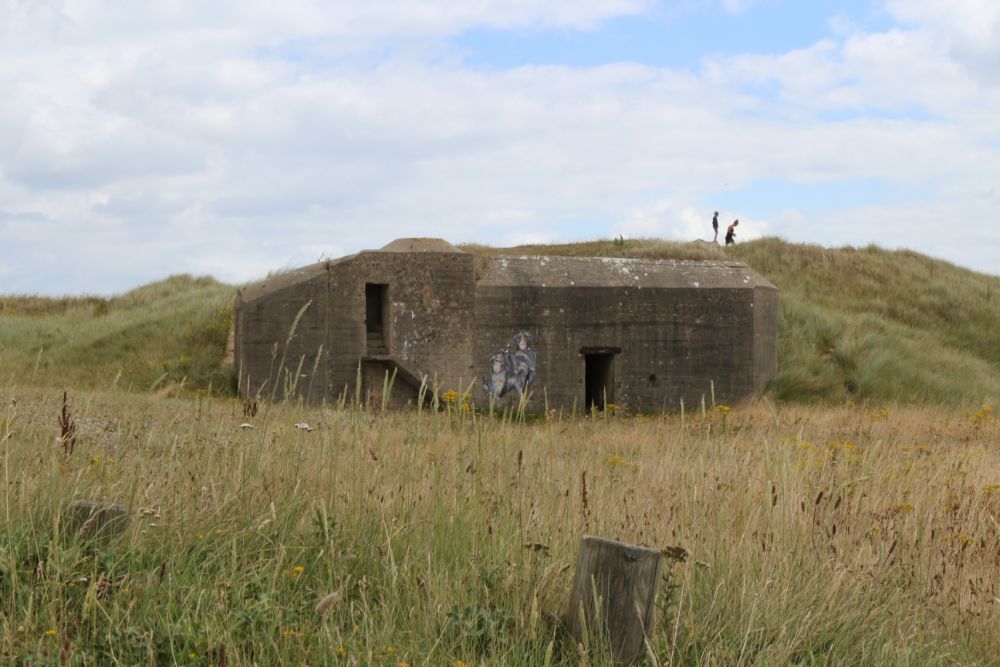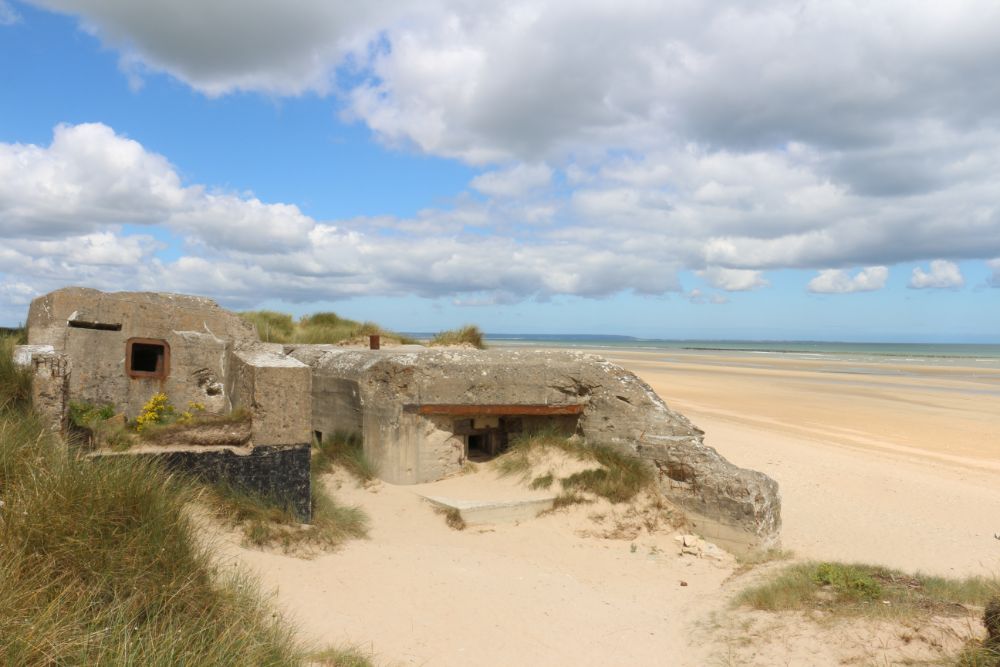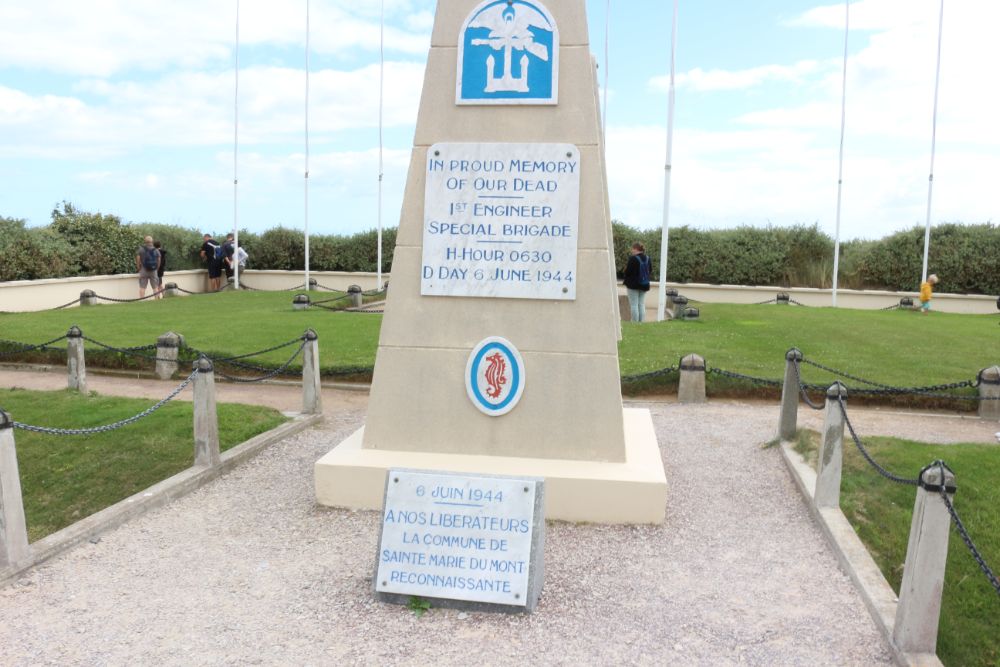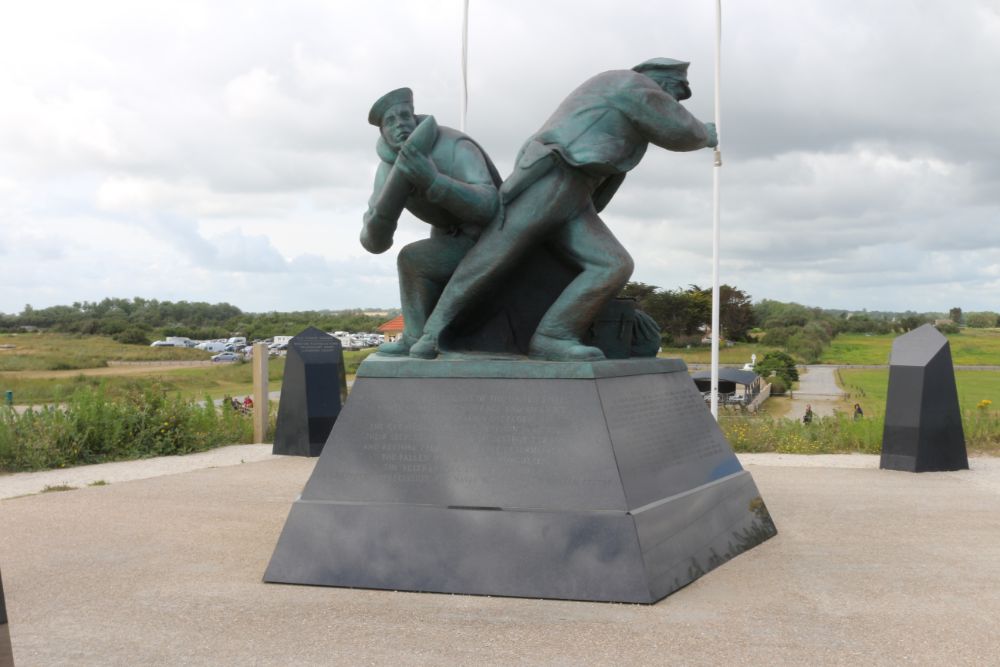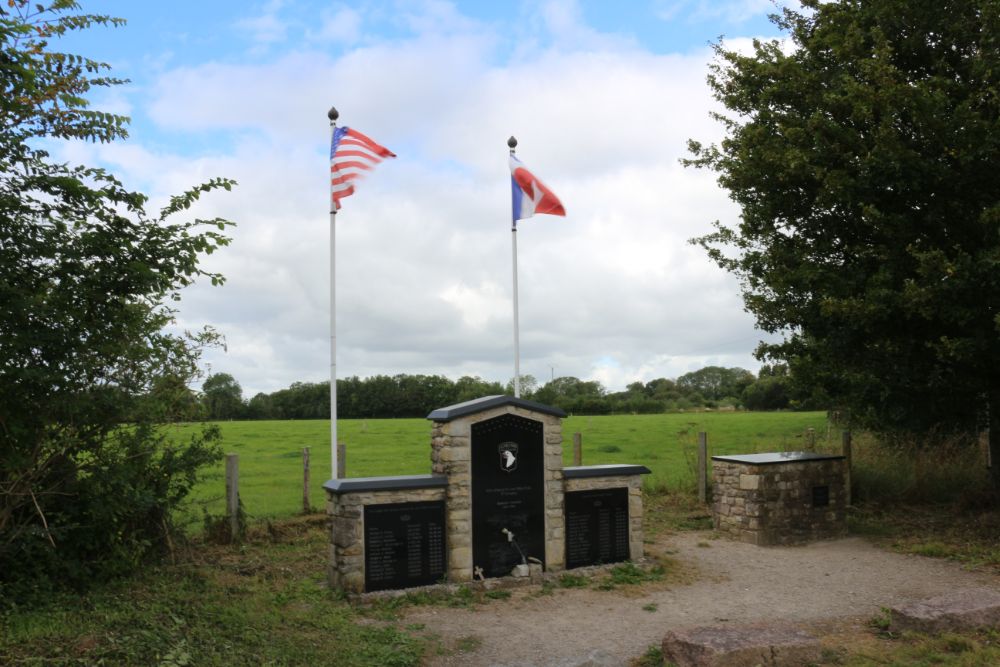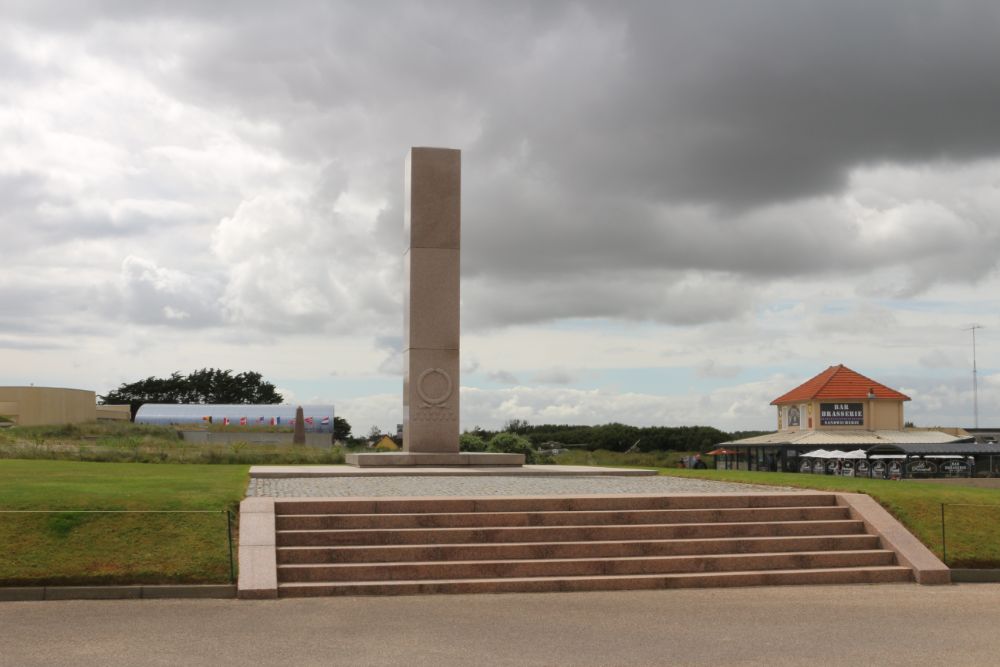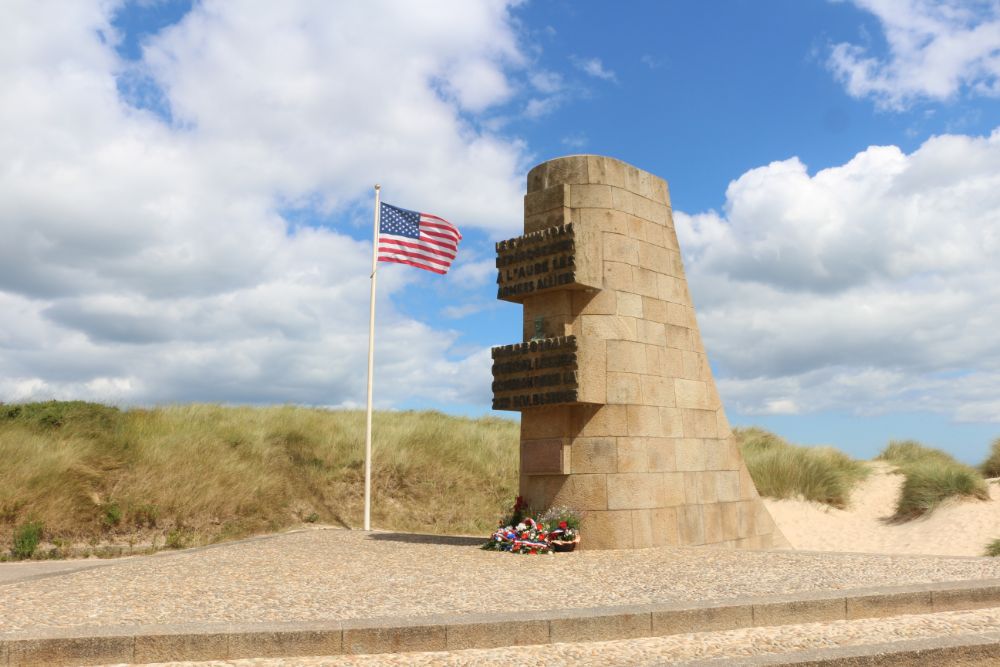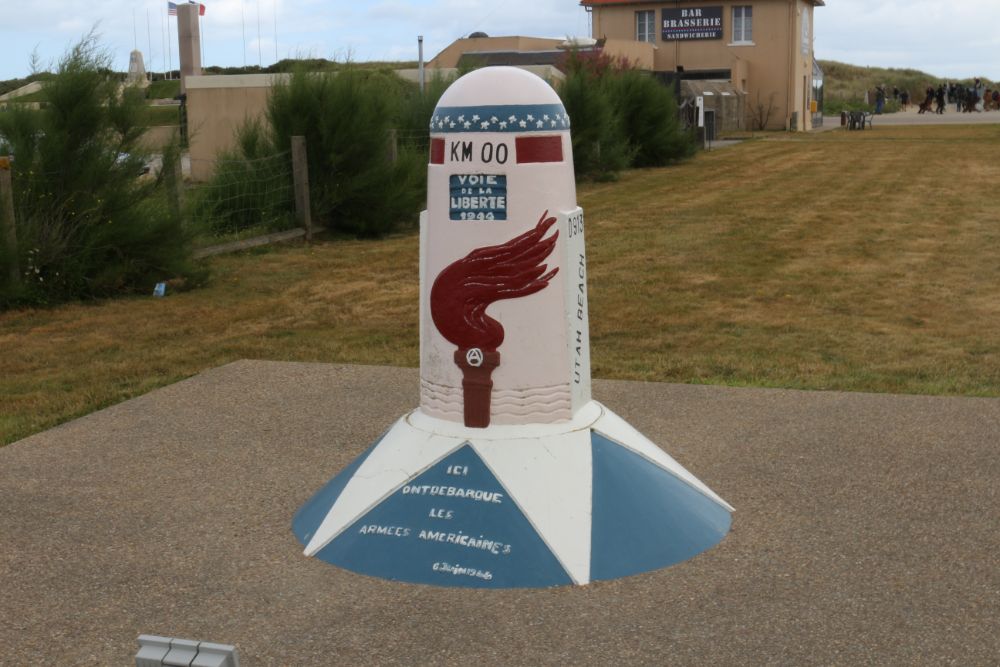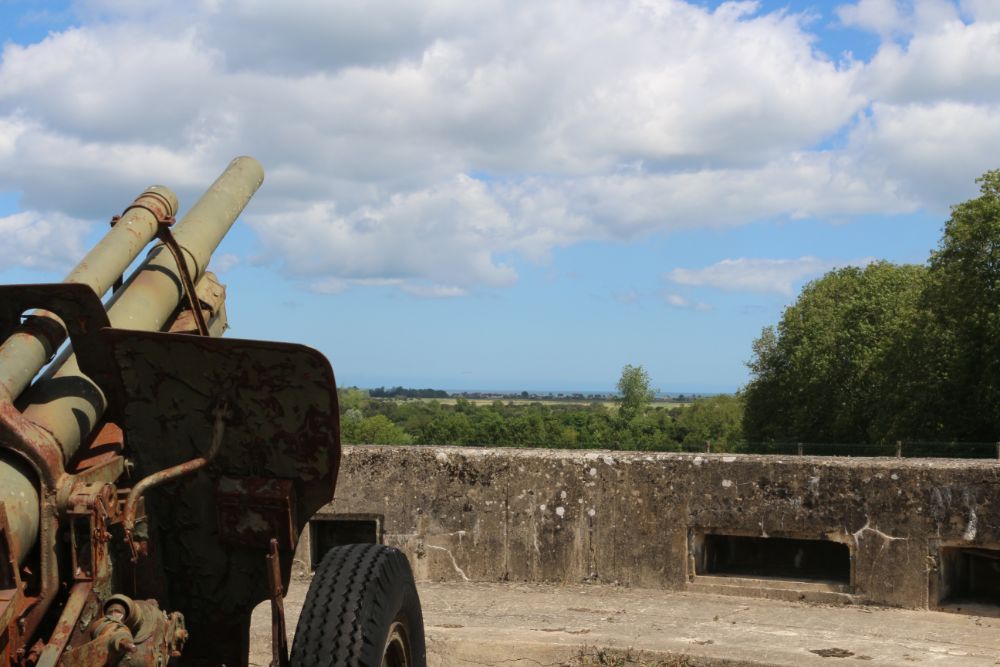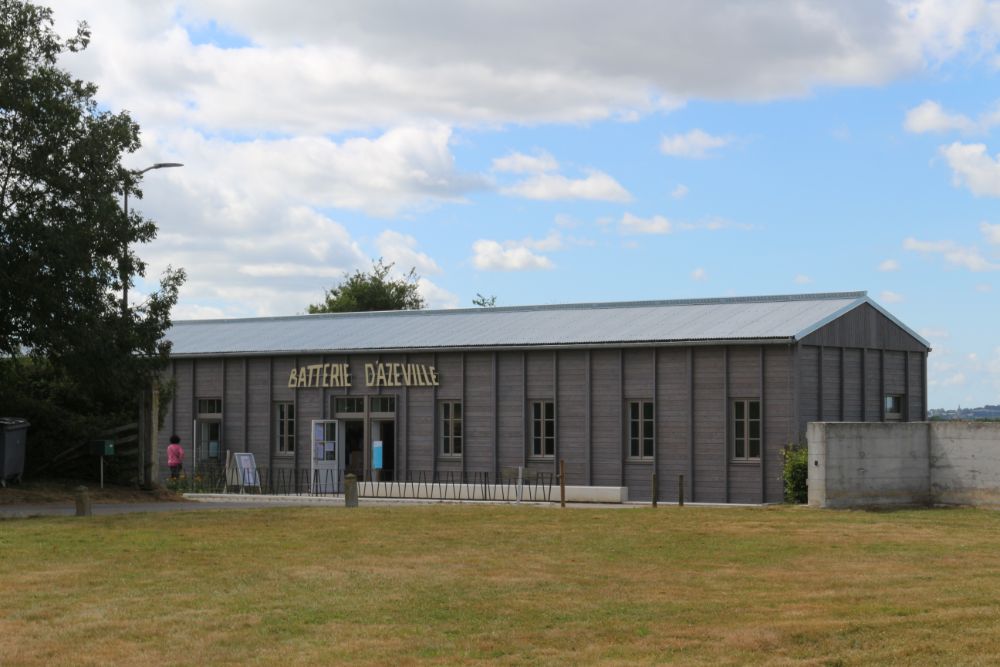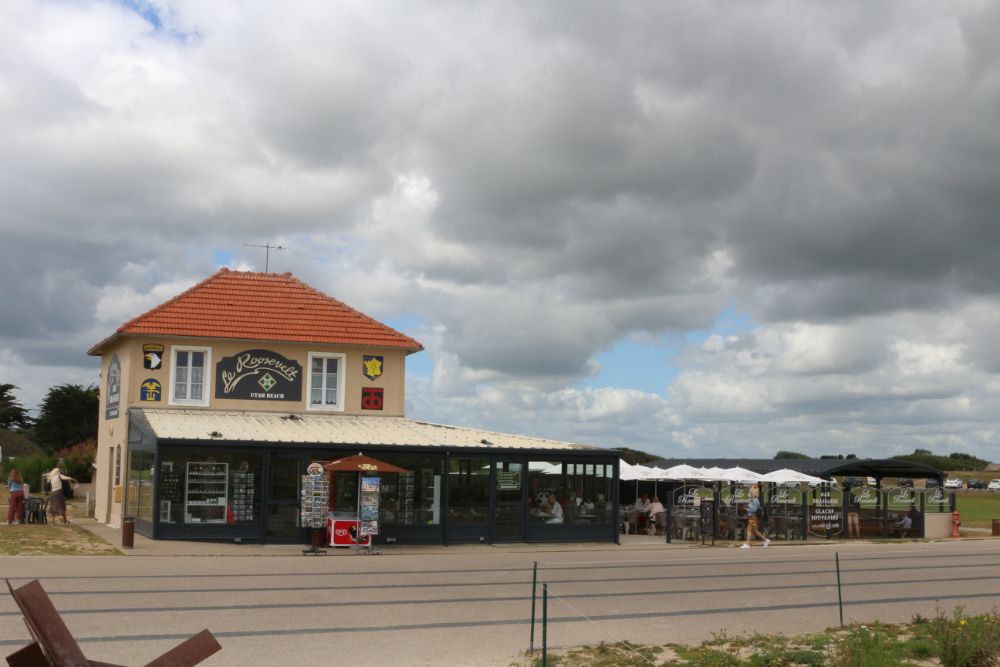Introduction
June 6, 1944 marked a very important date for the liberation of Europe. On this day, the largest amphibious landing in the history of the European continent took place, Operation Overlord, when more than 130,000 British, American, and Canadian troops set foot on French soil in Normandy. Their task was to break through Hitler’s Atlantic wall. Operation Overlord claimed the life of thousands of young men and the Third Reich never recovered. The tide definitively turned in favor of the allied forces.
Planning and defense
If they wanted to supply the troops that landed, the Allies had to get their hands on a deep water port in the near future. One such a port, Cherbourg, lay at the tip of the Cotentin peninsula. It was the very reason why a landing on Utah Beach was included in the Overlord plan. Utah was a sandy beach with a concrete sea wall and grassy dunes. At low tide, the beach was about 750 meters wide. Utah was separated from the other landing beaches by the double estuary of the Douve and Vire.
The beach and the inland area were defended by the 709. Infanterie-Division and the 352. Küsten-Division. These units were composed largely of prisoners of war from the Eastern Front who had chosen service in the German army over a prisoner of war camp; they were often led by fanatic German officers. Germans flooded a large part of the area behind the beach. The only way to get through this flooded area was over the five causeways. These were designated by the Americans as "exits" and numbered from south to north. These exits were defended by pockets of resistance, concentrations of casemates, bunkers, and machinegun nests, among others. The Germans had built seven of these pockets along the coast of Utah Beach and inland. The beach itself was littered with tightly packed obstacles, such as Belgian gates with mines lashed to the uprights, steel hedgehogs, barbed wire, and minefields.
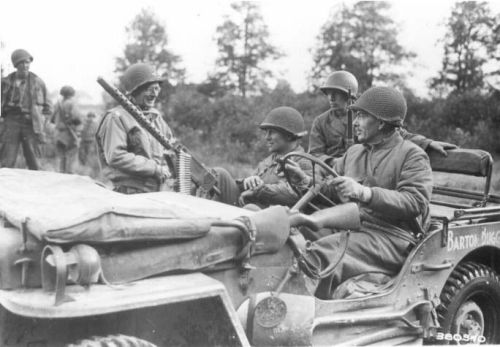
General Barton, commander of the 4th Infantry Division, in his jeep. Source: U.S. Army Center for Military History
The landing sector included the area between Exits 3 and 4, the beach at Les Dunes de Varreville. It was divided by the Allied planners into the sectors Uncle Red (left) and Tare Green (right). The soldiers of the American 4th "Ivy" Infantry Division were chosen to attack the beach. This was despite the fact that the division had been battered during Operation Tiger, an invasion exercise on April 28 1944 when German E-boats had sunk several ships, killing 749 American soldiers and sailors, including men from the 4th Infantry Division. The division had not yet gained any combat experience during the Second World War which made Utah Beach the only beach that was attacked by a unit without experience. Major General Raymond Barton commanded this division. Brigadier General Theodore Roosevelt Jr., the son of the former president, was added to the division as an additional general, without a fixed job description.
The landings of the infantry were to be supported by 36 Duplex Drive tanks (DD tanks) from the 70th Tank Battalion. The A and B companies of the Tank Battalion were to start the day, supported by four companies of the 8th Infantry Regiment, under the command of Colonel James Van Fleet (H-hour). The rest of the Infantry Regiment would follow in the second wave (H+5 min.). In the third (H+15) and fourth (H+17) wave, the remainder of the 70th Tank Battalion would be brought ashore, along with tankdozers and engineers from the 237th and 299th Engineer Combat Battalions. They had to clear the obstacles so the rest of the 4th Infantry Division could land. The scheduled time for the start of the landings was set at 06:30 hrs.
The beach landings would be preceded by nightly air drops of the 82nd and 101st Airborne Division which would be dropped behind Utah Beach. Their task was to take the causeways that ran inland from the beach so the landing units could move inland.
Two hours before the start of the landings on Utah Beach a small landing would take place on the Îles Saint-Marcouf, two small uninhabited islands that lay off the coast of Utah Beach. Allies thought the islands could be used as observation posts. The islands were attacked at 04:30 hrs by a assault team of 132 men of the 4th and 24th Squadron of the 4th Cavalry Group to prevent the invasion troops from being noticed. They were under the command of Lieutenant-Colonel Edward Dunn. Armed only with knives, these soldiers swam towards the islands which, indeed, were not occupied by German troops.
Definitielijst
- Cavalry
- Originally the designation for mounted troops. During World War 2 the term was used for armoured units. Main tasks are reconnaissance, attack and support of infantry.
- Infantry
- Foot soldiers of a given army.
- invasion
- Armed incursion.
- Regiment
- Part of a division. A division divided into a number of regiments. In the army traditionally the name of the major organised unit of one type of weapon.
- resistance
- Resistance against the enemy. Often also with armed resources.
- Squadron
- A military unit in the Belgian navy usually six to eight small ships operating together under one command. The smallest military unit in the Dutch air force of about 350 men. In most countries is the designation of a military unit thesize of a company. It is either an independent unit, such as a battery, or part of a bigger Calvary unit. In the air force it is the designation of a unit of aircrafts.
The landings
The landing of the DD tanks and the infantry were preceded by coastal bombing. The first took place from the sea and was executed from cruisers of Force A at 05:50 hrs. An air bombing by the 9th Bomber Command of the USAAF followed ten minutes later. Just before the landings were to start at 06:30 hrs, the beach was once again under fire, this time by destroyers and other vessels equipped with rocket launchers.
Meanwhile, the landing craft were en route to the beach. However, the attack waves headed for a different stretch of Utah Beach than planned. There were a number of reasons for this. The most important of these was the loss of three of the four control vessels that had to lead the way for the others: two of them had struck a mine and sank and the propeller of the third had broken off. Without these vessels, a combination of a southerly wind, the rapidly rising and surging Atlantic tide and poor visibility due to smoke could have caused the invasion forces for Utah Beach to drift 1 to 2.5 miles further south. The loss of these control vessels had caused some confusion. Commanders of other landing crafts continued to sail in circles, waiting for new directions. These came from Lieutenant Howard Vander Beek, who decided to take charge. He ordered the other vessels by megaphone to follow him to the beach.
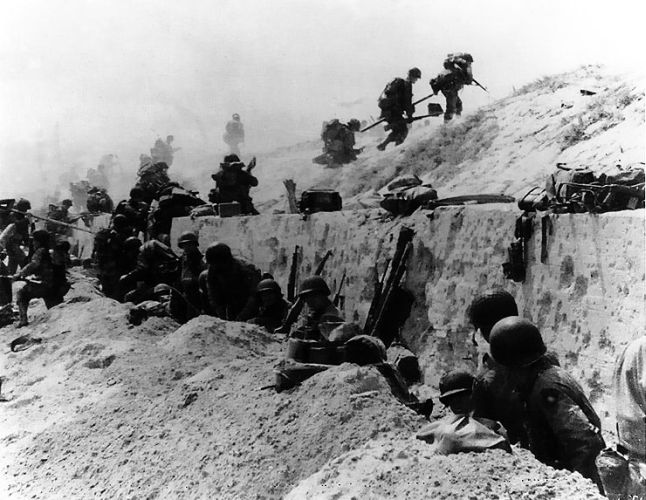
Soldiers of the 4th Infantry Division crossing the sea wall. Source: U.S. Army Center for Military History
The DD tanks were supposed to be the first to reach the beach, followed by four companies from the 8th Infantry Regiment. However, the tanks had difficulty advancing because of the high waves. In an attempt to make up for lost time, they had already been launched 1.2 miles closer to the coast, but they were overtaken by the first wave of infantry before they (the tanks) reached the coast. Many of these landing craft ran aground on the sandbanks due to the shallow water around Exit 2. This was also the reason why the landings were originally planned near Exit 3 which was fortified heavier. In addition, the vessel carrying Lieutenant Rebarcheck also ran aground. The helmsman wanted to drop off the infantry here but Rebarcheck shouted to him: "You don’t let those men drown! Just try again! " However, they ended up on a sandbank like many other vessels. Many soldiers had to leave their ships about 200 meters from shore. This meant that they had to wade through the water for a considerable distance before they reached the beach. All this had to be done without the help of the tanks.
The Americans had more luck with the bombings that preceded the landings on Utah Beach than those at Omaha Beach. The German reinforcements, which were already considerably less in number at Exit 2, had suffered considerable damage here. The German soldiers were driven out of their positions and in many cases could only prevent the Americans from reaching the sea wall with just hand weapons and light machineguns. "We were just about the first ship to arrive and the enemy fire was light", said Private Calvin Grose. The soldiers of the 4th Infantry Division crossed the seawall and attacked the German positions in the dunes. "What we saw there looked very different from what they had shown us in England with sand tables and models, Captain Howard Read remarked. Meanwhile, the rest of the 8th Infantry Regiment, with their commander Van Fleet, had landed with the second wave.
Around 06:45 hrs, the first DD tanks came ashore, along with the two landing waves with engineers and tankdozers which started clearing mines and obstacles. The tanks were a welcome reinforcement because the Germans realized what was going on and started shelling the bridgehead with 88mm guns. Meanwhile, Van Fleet and Roosevelt had found each other on the beach. They faced a difficult decision. Would they still have the rest of the division sent to the right beach or would they have to use the bridgehead that had just been established? This is where Roosevelt would have made the famous statement: "Then we will start the war from here!" The Americans focused on seizing Exits 1 and 2.
Reinforcements began to come ashore in the course of the morning. Six battalions landed about three hours after the first landings. Two squadrons had been formed from the tanks that had reached the beach, both of which went to assist the infantry clearing the coastal strip and advance inland. The 2nd battalion of the 8th Infantry Regiment had turned left and had managed to clear Pocket 2. After that, it had seized Pouppeville and had advanced to St. Marie-du-Mont. Even before noon, contact was made with units of the 101st Airborne Division. Exit 1 was now in American hands. The 3rd battalion had moved inland, had seized Houdienville, and had made contact with the 2nd battalion at Les Forges. The 1st and 2nd battalion of the 22nd Infantry Regiment had moved inland on the right flank. By the end of the day, they had advanced 6.2 miles up to the village of St. Germain-de-Varreville. After landing, the 3rd battalion of this regiment was turned to the right to clear the coastal strip. They encountered four pockets, which they all eliminated. This rapid gain of territory was also partly due to the excellent support of the warships off the coast at Utah Beach. When the lightly armed infantrymen encountered German positions, observers from the navy (the Shore Fire Control Parties) asked for supporting fire from the ships.
At the end of the day, 23,250 Americans had landed and 1,700 vehicles arrived on the beach. However, there were traffic jams on the roads leading inland. "Halfway through the afternoon the beach had turned from a piece of sand full of obstacles to a lively town. It was clear that our units had done a good job ", said Sergeant Wakefield. The landings on Utah Beach had cost the lives of 197 Americans, the smallest number of victims of all landing beaches.
The 4th Infantry Division established a solid bridgehead that almost met the goals set for the division before D-Day. The landings were completely different than planned in advance. There were several reasons why the landings had become a success. First of all, the assault troops had landed on a beach that was defended less strongly and they had not encountered strong German position at Les Dunes de Varreville. In addition, the aerial bombardment on Utah Beach had been much more effective. It had considerably damaged the German reinforcements in many places, unlike the reinforcements on Omaha Beach. Moreover, the naval bombings were also a lot more effective. Many more DD tanks came ashore on Utah Beach than on Omaha Beach, for example, where many had sunk because of the high waves. The choice to launch the tanks closer to the beach had been a correct one. When it turned out that the men had landed on a completely different beach than planned, Roosevelt and Van Fleet made the right decision by continuing the invasion from that location. There were also the airborne troops which had caused much unrest among the German troops inland and had taken on some important targets.
Definitielijst
- Bomber Command
- RAF unit which controlled strategic and sometimes tactical bombing (as in Normandy)
- D-Day
- The day of the long awaited invasion of western Europe in Normandy, France, 6 June 1944. After a long campaign of deception the allies attacked the coast of Normandy on five beaches to begin their march on Nazi Germany. Often explained as Decision Day, though this is entirely correct. The D stands for Day as generally used in military language. In this case it means an operation beginning on day D at hour H. Hence “Jour J“ in French.
- infantry
- Foot soldiers of a given army.
- invasion
- Armed incursion.
- mine
- An object filled with explosives, equipped with detonator which is activated by either remote control or by colliding with the targeted object. Mines are intended to destroy of damage vehicles, aircrafts or vessels, or to injure, kill or otherwise putting staff out of action. It is also possible to deny enemy access of a specific area by laying mines.
- Regiment
- Part of a division. A division divided into a number of regiments. In the army traditionally the name of the major organised unit of one type of weapon.
- rocket
- A projectile propelled by a rearward facing series of explosions.
- shelling
- Indication for shooting targets with grenades. Both from artillery and armoured artillery.
After the landings
The night following D-Day and June 7 was mainly dominated by securing the bridgehead at Utah Beach. There were still German units scattered throughout the area seized by the Americans which might threaten the supply and communication lines in the event of a possible German advance. These units had be eliminated first. In addition, the bridgehead was threatened by German reinforcements in the north, in the area where the 4th Infantry Division should have landed. Contact also had to be made with the airborne troops in Ste-Mère-Eglise, mainly soldiers of the 82nd Airborne Division.
The 8th Infantry Regiment was tasked with attacking a large German force located between Ste-Mère-Eglise and the beach where the Americans landed. Then, it had to make contact with the airborne troops and secure the situation there. The paratroopers in Ste-Mère-Eglise, commanded by General Matthew Ridgway, were under great pressure from German counterattacks on the town and urgently needed reinforcements. Ridgway had sent some of his staff out to make contact with the 4th Infantry Division and draw their attention to this. In the early morning of June 7, the 8th Infantry Regiment began its advance, dealing with German troops on the ridge between Fauville and Turqueville. The first battalion attacked Turqueville, defended by a Georgian unit. The fighting lasted the entire morning and Sergeant John Svonchek was seized. He spoke Russian and managed to persuade the opponents to surrender. The second and third battalion attacked Ecoqueneauville and Fauville respectively. The battalions experienced one of the fiercest battles of their campaign in Normandy. Eventually the second battalion managed to reach Ste-Mère-Eglise by surrounding it.
After almost two days, General Ridgway could now give the signal "under control". More so because the tanks from the 746th Tank Battalion broke through to Ste-Mère-Eglise in the afternoon of June 7. These were in reserve at Reuville, but Commandant General Joseph Collins had sent them to the town when he heard that urgent reinforcements were needed. The airborne troops also received reinforcements from the 325th Glider Infantry Regiment which had landed that morning. The first wave of gliders had had a rough landing because the landing zone was under German fire.
The other two regiments of the 4th Infantry Division, the 12th and 22nd, were instructed to advance in a northerly direction on June 7. They had to seize territory and targets that were included in the original plan, since the division should have landed farther north on June 6. The 12th Infantry Regiment was to advance to the northwest and take the higher ground around the town of Montebourg. Led by the first battalion, the advance progressed steadily, but it got stuck when the battalion reached the outer edge of Neuville-au-Plain. With the help of the second and third battalion, Neuville-au-Plain was taken later that afternoon. The troops moved on towards Montebourg, but not much farther, as the advance was halted for the night.
The 22nd Infantry Regiment had been assigned a difficult task. It had to advance to the right of the 12th Infantry Regiment and had to eliminate both heavily defended artillery batteries and the coastal reinforcements; the third battalion was in charge of the latter. During the advance, the battalion was cut off from the rest of the regiment by the inundations behind the coastal strip. The aim were the fortifications between Les Dunes de Varreville and Quinéville. These German reinforcements were able to attack Utah Beach and thus hinder the supply of reinforcements. The American ships off the coast always fired on the strongpoints first, followed by an attack by tanks and infantry from the rear. Three strongpoints were destroyed and the troops advanced beyond Exit 3. The battalion was then designated as a regimental reserve.
The other two battalions of the 22nd Infantry Regiment had to attack the heavily defended batteries at Azeville and St.-Marcouf (Crisbecq’s battery). The Crisbecq battery had a gun of 210mm, the Azeville battery of 150mm. The guns were housed in bunkers with underground storage areas for the ammunition. These were interconnected by trenches. The batteries were protected against attacks by anti-aircraft guns, machine gun bunkers, barbed wire barriers and minefields. The gun could reach both Utah Beach and the invasion fleet. For example, on D-Day, the destroyer U.S.S. Corry was sunk and some other ships were damaged. The first battalion was to attack Crisbecq’s battery, while the second battalion would attempt to capture the battery from Azeville. The battalions tried to defeat the German defense for hours, but without result. At the end of the afternoon, artillery shelling and a counterattack scattered the battalions which had to retreat to their starting positions. The battery in Azeville would eventually be taken as late as June 9. The Crisbecq battery even lasted until June 12, after which it was taken by troops from the 39th Infantry Regiment, 9th Infantry Division.
At the end of June 7, the Americans had managed to establish such a large and strong bridgehead on Utah Beach that it was now possible to speak of a successful landing. This despite the fact that the original plans were not carried out. The Germans had not been able to launch a large-scale counterattack on U.S. troops shortly after the landings. It was now time for the Americans to get more troops ashore, to expand the bridgehead further, and to advance in the direction of Cherbourg.
Definitielijst
- D-Day
- The day of the long awaited invasion of western Europe in Normandy, France, 6 June 1944. After a long campaign of deception the allies attacked the coast of Normandy on five beaches to begin their march on Nazi Germany. Often explained as Decision Day, though this is entirely correct. The D stands for Day as generally used in military language. In this case it means an operation beginning on day D at hour H. Hence “Jour J“ in French.
- destroyer
- Very light, fast and agile warship, intended to destroy large enemy ships by surprise attack and eliminating them by using torpedoes.
- Infantry
- Foot soldiers of a given army.
- invasion
- Armed incursion.
- machine gun
- Machine gun, an automatic heavy quick firearm.
- paratroopers
- Airborne Division. Military specialized in parachute landings.
- Regiment
- Part of a division. A division divided into a number of regiments. In the army traditionally the name of the major organised unit of one type of weapon.
- shelling
- Indication for shooting targets with grenades. Both from artillery and armoured artillery.
Information
- Article by:
- Pieter Schlebaum
- Translated by:
- Besmir Fidahic
- Published on:
- 10-02-2020
- Last edit on:
- 30-09-2024
- Feedback?
- Send it!
